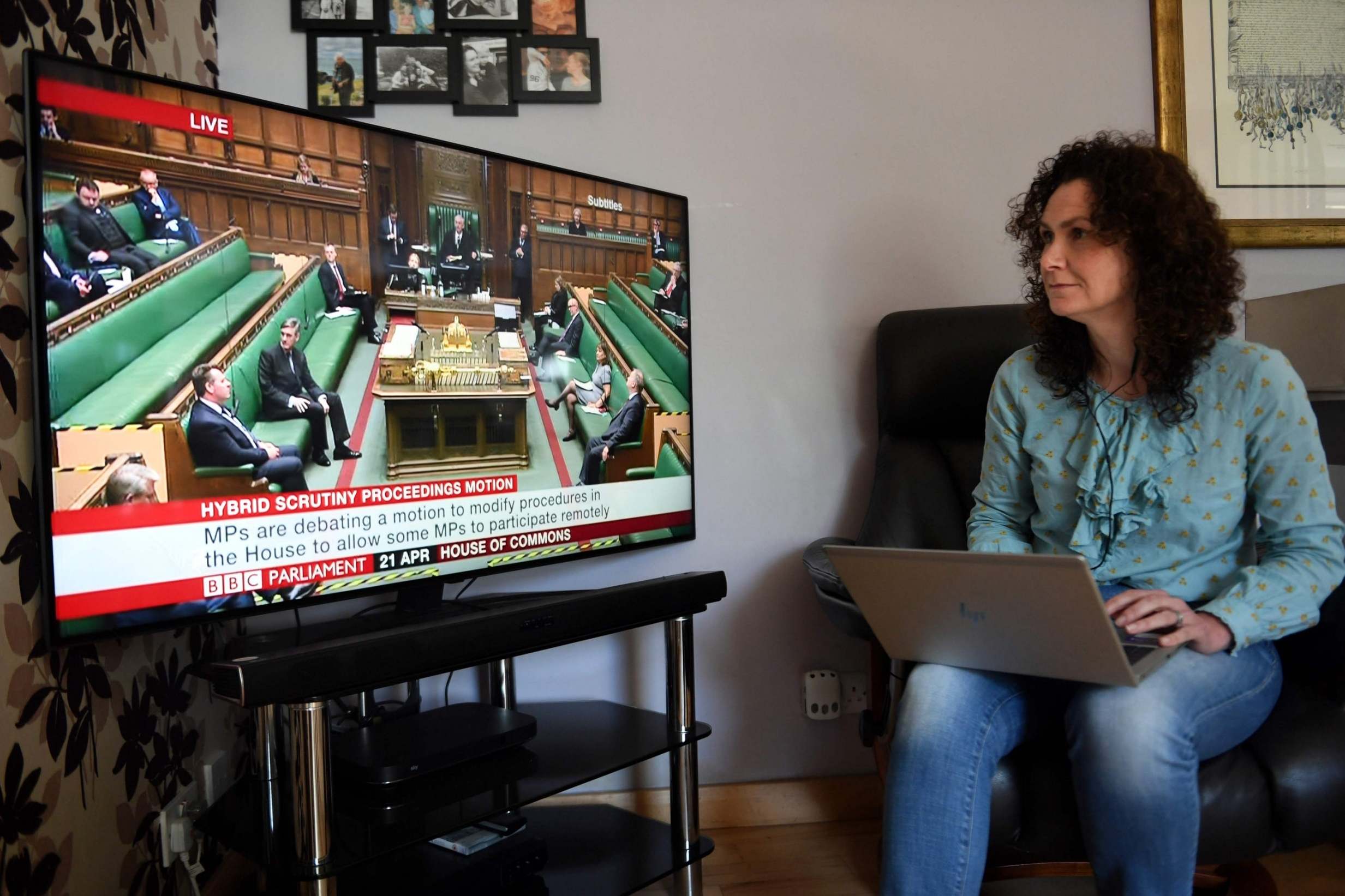Electronic voting system in Commons should be made permanent, say Lib Dems
Exclusive: Online system introduced for lockdown has dragged Westminster into 21st century and should not be dumped, says party
Liberal Democrats are pushing for the electronic voting system used to allow MPs to socially distance during the coronavirus pandemic should become a permanent feature of the House of Commons.
Virtual voting by laptop or phone caused some confusion when used for the first time on Wednesday - with chancellor Rishi Sunak voting the wrong way by accident - and leader of the Commons Jacob Rees-Mogg has said he wants a return to physical divisions “as soon as possible”.
But Lib Dem political reform spokeswoman Wendy Chamberlain is calling for the MemberHub system to be kept after lockdown is lifted and parliament returns to normal sittings.
She says that it took a pandemic to “drag parliament into the 21st century” and it would be a backwards step to simply ditch the online system once the virus is gone.
The party has submitted its proposals to an inquiry being conducted by the Commons Procedure Committee into the innovative arrangements introduced to cope with life under social distancing.
Under the Lib Dem plan, MPs would be expected to inform their whips and the Commons Speaker that they were planning to vote electronically in an upcoming division.
But the notification would be a formality, allowing them to vote while away from Westminster because of illness, constituency duties or official travel abroad without having to go through elaborate procedures.
Traditionally, absent MPs have had to make use of a system known as “pairing” under which they are matched up with a member planning to vote the opposite way, so that their missing votes cancel one another out.
But pairing agreements go out of the window in crunch votes, when sick MPs have sometimes been forced to leave their hospital beds to take part. In the most extreme cases, an MP can be registered as attending to vote if their ambulance enters the precincts of the Palace of Westminster. And the system is open to abuse, as when a Conservative MP voted in a knife-edge Brexit vote in 2018 despite being paired with former Lib Dem leader Jo Swinson, away on maternity leave.
It was not until last year that the first proxy votes were introduced allowing MPs to nominate party colleagues to vote on their behalf. But this arrangement is available only “by reason of childbirth or care of an infant or newly adopted child”.
A Lib Dem source dismissed suggestions that electronic voting would encourage lazy MPs to spend more time at home or on holiday, saying: “It’s about having access to parliament so you can represent your constituency. At the moment there’s a disparity between MPs with seats in London who can just go home or to their constituencies after a vote and others who have a long way to travel.”
And Ms Chamberlain told The Independent: “It is right that, like everyone else, MPs stay at home as much as possible to protect the NHS and save lives. But proper parliamentary scrutiny of the Government’s actions is essential, and allowing MPs to vote remotely is therefore absolutely vital.
“I’m grateful to the parliamentary staff who have put in place a secure system of remote voting for all MPs, so that we can continue to do our jobs.
“Now that the system up and running, there is no good reason not to make it permanent. Allowing MPs to vote remotely will put an end to us having to choose between going into Parliament when they’re ill or leaving their constituents unrepresented on key votes.
“It shouldn't have taken a pandemic to drag Parliament into the 21st century. But now that it has, we must not see Parliament go back again when this crisis is over.
“Liberal Democrats have been working for years to make Parliament more accessible and will continue to do so.”

The onset of the coronavirus crisis saw rapid work to adapt the MemberHub system, previously used by MPs to table parliamentary questions or early day motions, so it could be used for secure online voting.
When a division is called, MPs receive a notification by text and email and have 15 minutes to cast their vote by clicking Aye or No. Parliamentary authorities say it would take up to an hour for votes to be carried out in the traditional way by walking through the voting lobbies if MPs are required to maintain two-metre distancing.
Darren Hughes, the chief executive of the Electoral Reform Society, which is making its own submission to the committee inquiry, said that Westminster should not return to “business as usual” after the outbreak without considering whether innovations adopted during the crisis could be kept.
“To cut down remote voting just as it’s bearing fruit would be reckless and wrong,” said Mr Hughes. “We should be learning from how parliament has adapted during this crisis, not stymieing any innovation.
“Rather than packing hundreds of people into narrow voting lobbies, the government should enable remote voting for the duration of the pandemic, and learn from it. The procedure committee must be able to consult MPs on this and the Commons leader should work with them, not against them. MPs who are ill, pregnant or based hundreds of miles from Westminster should not be cast aside by a rushed return to ‘business as usual’.
“People in a very traditional institution have rapidly learnt new work practices, and set a positive example about the values of flexible working. Let’s keep learning as we come out of this pandemic, so we can build a stronger, more effective parliament that reflects the diversity of the whole UK.”
Join our commenting forum
Join thought-provoking conversations, follow other Independent readers and see their replies
Comments
Bookmark popover
Removed from bookmarks